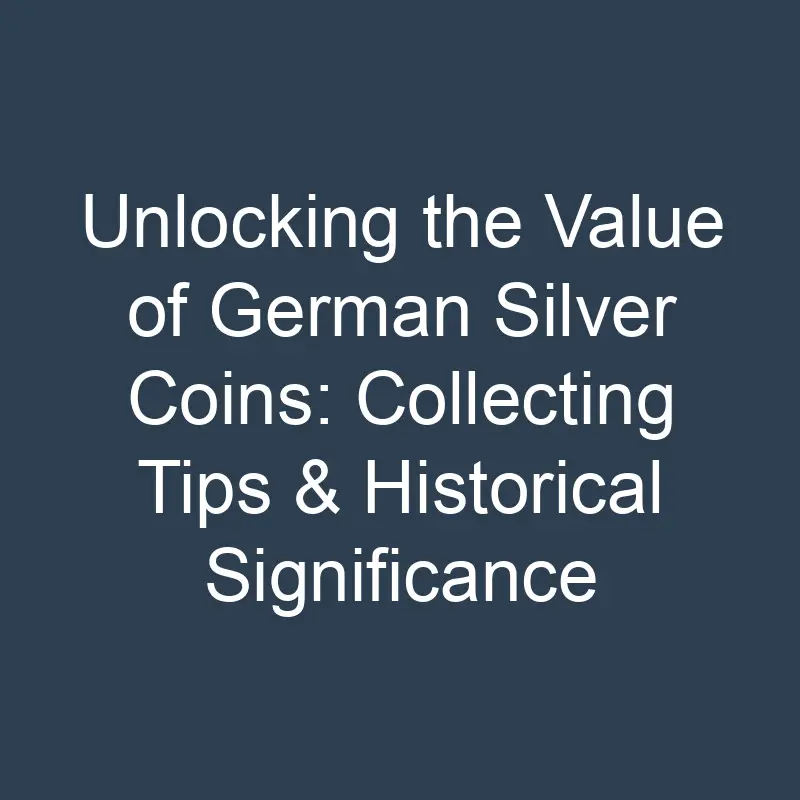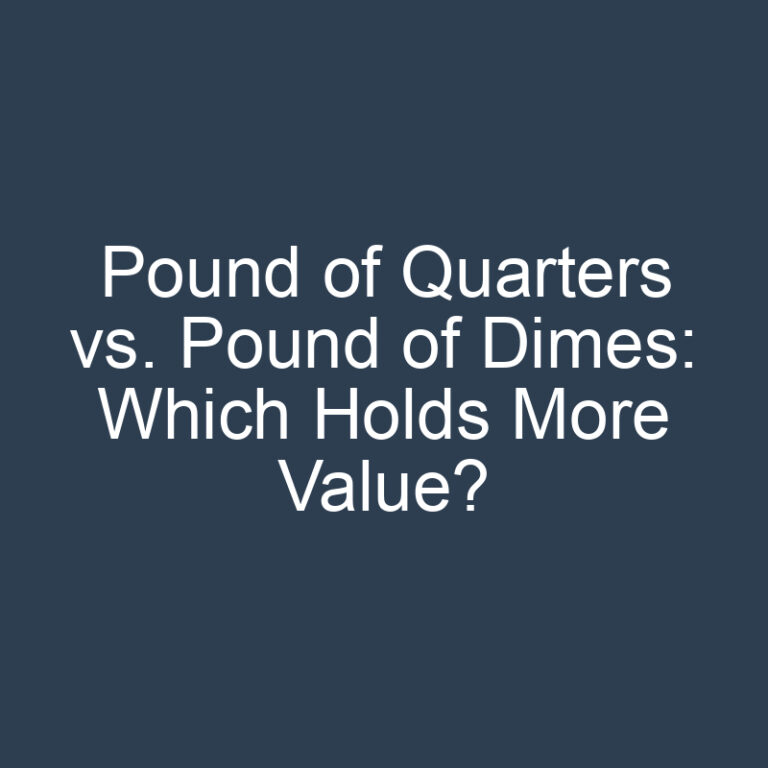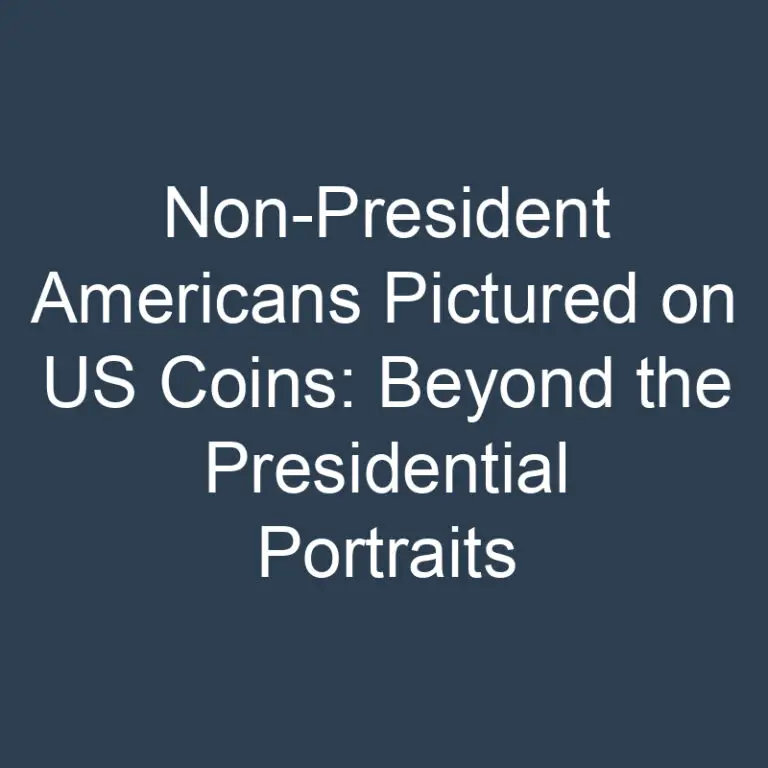
Are you a coin enthusiast looking to add some unique pieces to your collection? German silver coins might just be what you’re looking for. These coins have a rich history and are prized by collectors around the world for their beauty and craftsmanship. Join us as we explore the fascinating world of German silver coins and uncover the stories behind these numismatic treasures.
From the intricate designs to the historical significance, German silver coins offer a glimpse into the past that is truly captivating. Whether you’re a seasoned collector or just starting out, these coins are sure to pique your interest. Join us on a journey through time as we delve into the world of German silver coins and discover the allure of these remarkable pieces.
History of German Silver Coins
German silver coins have a fascinating history that dates back centuries. These coins were first minted in the early Middle Ages, with various rulers and states in what is now modern-day Germany producing their own coinage. The Kreuzer and Groschen were some of the earliest forms of German silver coins in circulation.
During the Holy Roman Empire, German silver coins became widely recognized for their quality and consistency. The introduction of the Thaler in the 16th century further solidified Germany’s reputation for minting exceptional coins. The Maria Theresa Thaler, minted in the Austrian Empire, is a prominent example of a silver coin that gained international popularity.
In the 19th and 20th centuries, Germany went through periods of political and territorial changes that influenced the design and production of silver coins. From the establishment of the German Empire in 1871 to the turbulent years of the World Wars, German coinage evolved reflecting the prevailing ideologies and historical events of the time.
Today, German silver coins continue to be sought after by collectors worldwide for their historical significance, artistic value, and precious metal content. Whether you are a numismatist interested in the intricate details of coinage or a history enthusiast fascinated by the stories behind each piece, exploring the world of German silver coins offers a unique glimpse into the past and a rewarding collecting experience.
Design and Craftsmanship
When it comes to German silver coins, the meticulous design and craftsmanship are truly remarkable. Here are some key points to consider:
- Intricate Details: German silver coins are renowned for their intricate designs and exquisite details, showcasing the artistry and skill of the craftsmen involved in their production.
- Symbolism: The designs on German silver coins often incorporate symbolism, reflecting historical events, cultural motifs, and national pride, making each coin a unique piece of art and history.
- High Quality: The craftsmanship of German silver coins is of the highest quality, with a focus on precision and fine details that set them apart from other coins of the time.
- Evolution of Designs: Over the centuries, the designs of German silver coins have evolved to reflect the changing political and cultural landscape of Germany, offering collectors a glimpse into the country’s rich history.
- Artistic Value: Beyond their monetary value, German silver coins are prized for their artistic value, attracting collectors and enthusiasts who appreciate the beauty and historical significance of these coins.
- Collectibility: The exquisite design and craftsmanship of German silver coins make them highly collectible, with each coin telling a unique story and providing a tangible connection to the past.
German silver coins truly stand out for their design and craftsmanship, making them a must-have for any numismatist or history enthusiast.
Significance in Numismatics
German silver coins hold a prominent place in the world of numismatics. Numismatics encompasses the study and collection of coins, banknotes, and related objects, reflecting a deep appreciation for their historical, cultural, and artistic value. When it comes to German silver coins, their significance goes beyond mere monetary worth.
- German silver coins offer valuable insights into the economic, political, and social landscapes of different time periods.
- They serve as tangible historical artifacts, preserving moments of the past for future generations to explore and learn from.
- These coins are often admired for their intricate designs, expert craftsmanship, and symbolic imagery, adding to their allure among collectors and historians alike.
Amidst the world of numismatics, German silver coins stand out for their unique blend of history, artistry, and cultural symbolism.
Collecting German Silver Coins
When Collecting German Silver Coins, it’s essential to consider factors such as condition, rarity, and historical significance. These coins offer a tangible connection to the past and provide a glimpse into the artistic styles and political events of the time. Here are some key points to keep in mind:
- Condition: The condition of a German silver coin greatly affects its value. Look for coins that have been well-preserved with minimal wear and damage.
- Rarity: Rare German silver coins, especially those from specific historical periods or with unique design features, are highly sought after by collectors.
- Historical Significance: Understanding the context in which a German silver coin was minted can add depth to your collection. Research the history surrounding the coin to appreciate its full historical significance.
As collectors, we are drawn to German silver coins not just for their monetary value, but also for the stories they tell. Each coin has a unique narrative to share, whether it’s a commemorative piece celebrating a significant event or a coin reflecting the artistic trends of its era.
When adding German silver coins to your collection, it’s crucial to authenticate their provenance. Working with reputable dealers and ensuring proper certification can help you build a collection that is both valuable and authentic.
In the world of numismatics, Collecting German Silver Coins is not just a hobby; it’s a journey through history and culture. Each coin you acquire enriches your understanding of the past and adds a unique piece to your numismatic collection.
Key Takeaways
- German silver coins have a rich history dating back centuries, reflecting Germany’s evolution through various political and territorial changes.
- The meticulous design, symbolism, and high-quality craftsmanship of German silver coins make them highly collectible and prized for their artistic value.
- German silver coins offer valuable insights into economic, political, and social landscapes of different time periods, serving as tangible historical artifacts.
- When collecting German silver coins, consider factors like condition, rarity, and historical significance to build a collection that offers a tangible connection to the past.
Conclusion
In collecting German silver coins, we’ve explored the significance of factors like condition, rarity, and historical context. These coins serve as tangible reminders of the past, offering insights into artistry and political landscapes. It’s crucial to prioritize well-preserved pieces, unique historical specimens, and to grasp the minting circumstances. Authenticating coins through trusted sources is key to curating a valuable collection. Each coin’s narrative, whether tied to an event or reflecting artistic trends, enriches our knowledge of history and culture in the realm of numismatics.






